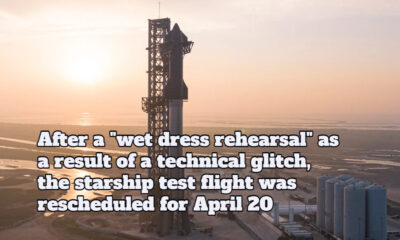Science –Technology
the nearest black hole to Earth in our local universe. A new era has begun with the discovery
Published
1 year agoon

Using the Gaia satellite, researchers have located the BH1, the nearest black hole to Earth, in our backyard in space
Scientists have made a significant astronomical discovery by identifying the nearest black hole to our planet, which is located nearby in space. This remarkable discovery opens up new avenues for studying these enigmatic entities and comprehending their impact on the structure of the universe…
Read Also:- Gujarat defeated Delhi for the second time in a row in the IPL; Sudarshan’s match-winning innings
The BH1 black hole has been discovered
The European Space Agency’s Gaia satellite was used by astronomers to find the BH1 black hole. The black hol has been discovered at a distance of just 1,000 light-years from Earth, making it the closest black hole to be discovered. To precisely measure the motions and positions of stars found in the Milky Way galaxy, the Gaia satellite was developed.
What is a black hole?
Massive stars collapsing due to their own gravity can create black holes, which are incredibly dense objects. Since they are so dense, even light itself can be captured by their powerful gravitational field. Telescopes cannot see them because they are invisible to them; instead, they can only detect their gravitational pull on nearby matter.
Why is this finding so important?
The discovery of BH1 is significant because it enables close-up, in-depth research on black holes. Astronomers can gain more knowledge about the characteristics and behaviour of black holes by observing the effects of its gravity on nearby stars and gas. This in turn can assist us in comprehending how they develop, grow, and engage with their environment.
In addition to BH1, the Gaia satellite also found Gaia BH2, which is about 15,000 light-years from Earth and is another black hole. The orbits of these two black holes are the furthest apart of any known black holes, with Gaia BH2 taking about 7.6 years to complete one orbit and BH1 orbiting a companion star once every 6.7 days.
Black hole research is about to enter what looks to be an exciting new phase with the discovery of BH1 and Gaia BH2. Astronomers will be able to unravel the mysteries of these enigmatic objects and learn new things about the universe with the aid of cutting-edge telescopes and satellites.
What is the Gaia satellite and what is its purpose?
What has Gaia discovered?
How does Gaia measure distance?
Where is Gaia telescope located?
You may like
-


Twitter’s paywall system has been removed from its application programming interface
-


After a “wet dress rehearsal” as a result of a technical glitch, the starship test flight was rescheduled for April 20
-


Q1 2023, Netflix added 1.75 million new subscribers. Ad-Supported Tier Following Crackdown on Password Sharing
-


Elon Musk will develop ‘truth-seeking’ AI to compete with Google and Microsoft in the AI race
-


Sundar Pichai, the CEO of Google, alluded to more job cuts at the tech giant
-


Truecaller Launches Live Caller ID for iPhone Users
